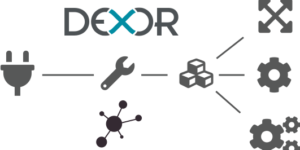
Is infrastructure monitoring that important? Should you invest your time and money in a monitoring system? Is it necessary for everyone? In this post, we’ll share our thoughts on how monitoring will make your life easier.
Here are our top 5 reasons for infrastructure monitoring.
1. Backup
Have you heard this joke before? There are two categories of people: those who do backups and those who don’t… yet. But the fact that you have configured the backup of your sensitive data is not enough to stop worrying. But what can go wrong? Just a few hints for you:
- The backup storage overflow
- The remote destination is not available
- DNS does not resolve the remote endpoint
“There are two categories of people: those who do backups and those who don’t… yet.”
— IT engineer after two days without sleep
Some backup solutions can detect these issues. But in general, the properly configured infrastructure monitoring system allows accurate verification of the components used in the backup procedure, such as usage of storage, the desired DNS server, or the availability of the destination.
2. Performance
Once the application/website/other shared resource grabs the audience’s attention, it’s critical to keep it going as long as possible. There is nothing more frustrating in an IT service than unstable workflows and longer waiting times for a response. Very often, the reason for such drawbacks is the overloaded component of a shared resource. For example, a server running the application does not have enough RAM to serve all requests, or the requests take more CPU resources than a server has. Infrastructure monitoring can be excellent for identifying bottlenecks in an application by observing all the components involved and tracking their values.
3. Prediction and planning
Infrastructure monitoring can collect long-term data for you. Based on this data, you can make decisions about the need for additional resources for your application. For example, you may host a database that grows over time. Based on the collected information, you can estimate the growth rate of the database and predict when its size will reach the memory limit. So you are ready to upgrade the storage in advance.
4. Security
IT security is essential for private life and any business. Although it is better to delegate this to security specialists, there are some benefits that infrastructure monitoring can bring you.
Updates
Almost every day, security specialists and enthusiasts announce new security vulnerabilities for all kinds of software. Every day, developers around the world try to release patches to close revealed security holes. And this confrontation does not tend to end. The irony of a situation is that it is not enough to release a patch to the software – this patch must be applied to the systems using the software. To get all the necessary software updates on time, an administrator must know what software the business he serves depends on.
The maintainer must be relatively agile to ensure the infrastructure has been compromised in the shortest amount of time. A properly configured infrastructure monitoring system helps identify which software on the host needs new stable versions installed.
Data safety
Of course, security professionals must make significant efforts to prevent data leaks of any kind, including social engineering. But infrastructure monitoring can help identify security breaches.
In five years from 2015 more than 1,195 billion records were exposed (within 7253 security breaches)
— statista.com
Let’s take an example: you have a storage facility that holds a relatively large database of ca. 50 GB. Once a day, between 2 and 3 a.m., you make a backup – copying the database to your FTP share at a data rate of about 1 Gbps. For the rest of the day, the network communication with a database does not exceed 5 % of the available network capacity.
With the help of long-term recording of the host’s network interface usage, it will be relatively easy to identify the malicious network activity triggered by copying the data. In addition, it is possible to set dynamic warning/critical notification thresholds for network usage that have high values for the backup period and relatively low values for the rest of the time.
Ransomware
There is another scary word that has caused a lot of buzz in 2021 – Ransomware. The public services, the governmental sector, and even large companies with a solid IT department are unable to protect themselves against this type of attack sometimes. To prevent these types of attacks, IT security staff must always anticipate that it could happen. Check out a memo from the US FBI on how to prepare for ransomware attacks. Note, infrastructure monitoring can’t save your infrastructure from this vulnerability. Nevertheless, correctly configured thresholds for monitored CPU, RAM, and I/O operations, will timely notify about an unexpected behavior on hosts so that trained IT staff can perform termination steps to secure data.
5. Reputation
Configure your infrastructure monitoring considering all of the above reasons leads to a good image and reputation of a company or an individual.
- No data loss can occur because everything is backed up. All backups, in turn, are verified by the monitoring solution.
- The owner ensures the application performance is at the highest level because there are enough resources for all components during peak periods.
- The product evolves with a clear perspective, making it easy to predict how many resources it requires in the foreseeable future.
- The owner ensures that the infrastructure’s key software components are up to date, antivirus and anti-ransomware databases equip fresh updates. An Infrastructure monitoring solution notifies suspicious behavior to the appropriate personnel.
A good reputation, in turn, increases company revenue over the years because it builds trust in the company.
Conclusion: Who needs Infrastructure Monitoring?
Everyone who has an infrastructure, from a small home-LAN to the corporations with dozen thousand hosts, requires to have an overview of all infrastructure and applications issues in one place with properly configured thresholds and notifications.
- A Monitoring solution will help individuals avoid inconvenience due to outage recognitions for the Home LAN with shared resources such as a network printer, a NAS for storing data of all family members, a Smart Home gateway, etc.
- Small businesses and freelancers very often underestimate the value of a monitoring solution. It causes, for example, an outage of a website for weeks instead of minutes. Or loss of customers’ data because of corrupted backup. All this leads to the loss of revenue.
- Medium businesses and corporations cannot allow themselves to slowly react to the issues which may cause inconvenience to the customers. Therefore, all possible infrastructure and software outages are to be fixed before customers notice anything. And a monitoring system is a tool that prevents most of the issues, or at least it allows identification of the problem within a minimum time.
We at dexor have been a certified partner of Icinga since 2018. With our experience, we see how icinga2 – an open-source monitoring solution, can meet all the needs in the monitoring of all user groups. Learn how we can be helpful for your company here. In our blog, we constantly share our monitoring experiences – here you can find tips for monitoring with Icinga. Also, we can explain this open-source monitoring solution in detail in our training courses.

